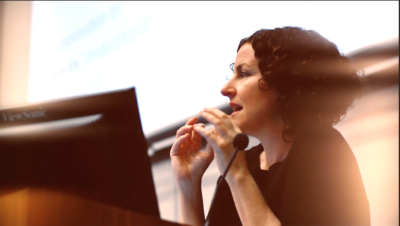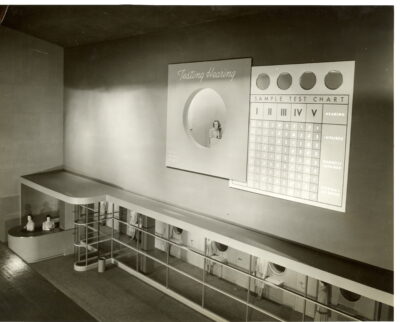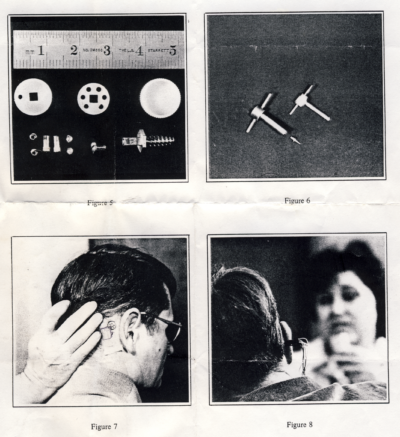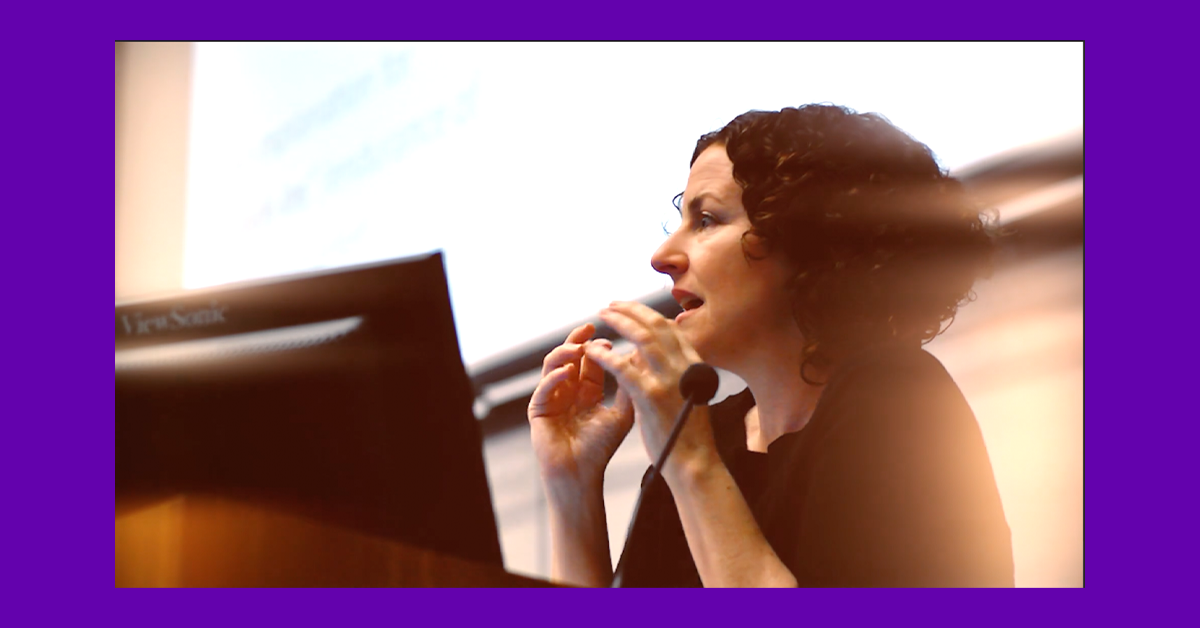Past IEEE Life Members fellowship recipient talks about her research and reflects on how IEEE has influenced her professional journey.

IEEE Life Members are dedicated to supporting the next generation of technology-focused professionals. To that end, the IEEE Life Members Fund of the IEEE Foundation offers two fellowship opportunities and also recognizes the best paper on the history of electrotechnology.
The recipient of the 2007 IEEE Life Members Fellowship in Electrical History and co-recipient of the 2020 Bernard S. Finn IEEE History Prize, Mara Mills is a professor of Media, Culture, and Communication at New York University, where she works on the history of technology and disability.
Starting out in the life sciences, with master’s degrees in biology and science education, Mills describes her career path as unexpected. “If you had told me in my 20s that I would one day be a media studies professor, I would not have believed you!”. She credits her change in direction to a chance meeting with Stephen Jay Gould at an AAAS Board of Directors meeting. “I was there to give a talk on science education issues in Silicon Valley, and over lunch, Gould told me about the Harvard History of Science department and encouraged me to apply.”

Hearing Tests at the 1939 World’s Fair.
Courtesy AT&T Archives and History Center. From Mara Mills, “Deafening: Noise and the Engineering of Communication in the Telephone System,” Grey Room (Spring 2011): 118-143.
During her Ph.D., Mills became interested in the history of electronics—and was surprised at how little had been written about this area of engineering that had transformed communication, computing, medicine, and more. She started researching the AT&T archives, with the help of archivist and corporate historian Sheldon Hochheiser. She immediately noticed that the company’s debts to Alexander Graham Bell’s work reverberated in twentieth-century innovations that redefined hearing and “hearing loss” (a phrase telephone engineers popularized). “Engineers in the Bell System gave us the decibel, the filter, the first commercial electronic audiometer, the audiogram, a variety of amplifiers and signal processing techniques—transforming communication as well as hearing itself.”
Over the past 15 years, Mills has published on a number of other historical topics at the intersection of technology and disability, some of which have less obvious but still foundational connections to disability: the histories of hearing aids and cochlear implants, the vocoder, optical character recognition, time-stretching, and more. As her colleague Douglas Baynton puts it, “Disability is everywhere in history, once you begin looking for it.”
Mills is a member of The Society for the History of Technology (SHOT), where she served on the executive council from 2016-2018. Through SHOT, she first learned about the awards and historical resources sponsored by the IEEE, including the online oral history collection and ever-growing Engineering and Technology History Wiki, as well as the IEEE History Center, where she’s done archival research into the history of the IEEE.
This summer, Mara Mills was kind enough to be interviewed by IEEE Life Members:
What is the most useful aspect of your research and work as a historian of technology and disability?
MM: Although disability is a commonplace of human existence—and by some estimates, a quarter of Americans have disabilities—the historical record is filled with myths, absences, exaggerations, and other misleading information about disabled people. The interdisciplinary field of disability studies offers research strategies for parsing fact and fiction in archives, literature, popular photography, and library classification systems. In my work on the history of technology, I’ve noted a specific and recurring problem that I call the “assistive pretext.” Aid to disabled people is a frequent rationale for invention in grant applications, patents, and advertisements, but often these claims are purely speculative, or disabled users are simply intended to test a prototype or pilot a product that will be marketed to other groups. At the same time, disabled scientists, engineers, technology users, and tinkerers are everywhere, yet their experiences aren’t always documented.
It’s important to keep in mind the different ways disability has been defined and perceived across time and place. So, I’ve also researched the history of specific concepts related to disability—such as “impairment,” which my colleague Dan Bouk and I trace to health surveillance in the early twentieth-century American life insurance industry, aided by Hollerith punch card computing. Even in a single nation today, there are distinct medical, legal, cultural, and activist approaches to disability.

Charles Graser’s Percutaneous Cochlear Implant (Prototype). House Ear Institute, c. 1970. Courtesy of Charles Graser. From Mara Mills “Cochlear Implants After 50 Years: A History and an Interview with Charles Graser,” The Oxford Handbook of Mobile Music Studies, Volume I, ed. Jason Stanyek and Sumanth Gopinath (Oxford UP, 2014), 261-297.
Finally, history matters to design—from unconscious bias that limits who can use a device or system; to path-dependence and past corporate imperatives for certain materials or kinds of integration; to the responses and demands of test subjects. I’ve collaborated with disabled and non-disabled engineers, designers, physicians, and early adopters (of things like cochlear implants or reading machines) to think about redesign and to give historical credit for innovation where credit is due.
What are you most proud of in relation to your work?
MM: With my colleague Faye Ginsburg, a medical anthropologist, I founded the NYU Center for Disability Studies, which serves as a hub for research, community collaborations, and cultural events on campus. We wanted a space on campus (and virtually) for disability scholarship, arts, and activism—not just accommodations. We recently completed a three-year, NSF-funded project to document the experiences of disabled and chronically ill New Yorkers during the COVID-19 pandemic. The result is a 16-chapter book written by faculty, students, librarians, journalists, and activists, How to be Disabled in a Pandemic, forthcoming from NYU Press in 2024.
What role does technology have in disability studies?
MM: Technology has always been a part of disability studies, and disabled life, because humans are technical beings. But a watershed moment for turning the attention of historians to the topic of technology and disability was the 2002 publication of Artificial Parts, Practical Lives: Modern Histories of Prosthetics, edited by Katherine Ott, David Serlin, and Stephen Mihm. In the introduction to this book, Ott (medical curator at the Smithsonian NMAH) insisted that “all useful technology is assistive,” thus so-called “assistive technology” should not be segregated in name or left out of the histories we write. Over the last twenty years, there has been a boom of work by disabled and non-disabled designers, historians, and media scholars writing at this intersection. Some of this scholarship highlights disability making, engineering, tinkering, and expertise; some emphasize histories of algorithmic bias, technical exclusion, misrepresentation in advertising, and what Ashley Shew calls “technoableism” (design aimed at normalization). Disability artists and communities have also devised new approaches to digital accessibility, from creative captioning to forms of remote work and sociality that long preceded the pandemic.
Tell us about receiving the IEEE Bernard S. Finn IEEE History Prize.

Harvey Lauer with Kurzweil Reading Machine, 1977. Courtesy Harvey Lauer.
MM: In 2020, I was delighted to receive the Bernard S. Finn IEEE History Prize with my former graduate student Xiaochang Li, who is now a professor in the Department of Communication at Stanford. Xiaochang and I teamed up to write a long history of automatic speech recognition (“Vocal Features: From Voice Identification to Speech Recognition by Machine,” Technology and Culture), anchored by the history of the sound spectrograph. Xiaochang is an expert on the late twentieth-century relationship between speech recognition and machine learning; I had previously published an article on the World War II development of sound spectrography, based on research in the AT&T Archives. I also collected the papers of Bell researcher Harriet Green Kopp and deaf educator before she died, and donated her materials related to spectrography, “voice printing,” and deaf visual telephony to the Smithsonian National Museum of American History.
Tell us about receiving the IEEE Life Members’ Fellows in Electrical History
MM: The IEEE Life Members’ Fellowship funded my crucial final year of dissertation writing. As a single parent, with medical expenses related to my daughter’s epilepsy, I spent much of my graduate history career at Harvard either TA-ing biology classes or commuting to Brown to teach a course in the BioMed division. Having a year to write without teaching made all the difference for graduating and moving on to a postdoc.
How has IEEE impacted your work and career?
MM: Beyond the invaluable funding for research and writing, I want to give a shout-out to the IEEE Annals of the History of Computing, which published one of my first articles in 2011, on “Hearing Aids and the History of Electronics Miniaturization.” This article looked at hearing aid users as the first consumer market for printed circuits, transistors, and integrated circuits–part of a longer history of demand for miniaturized components and compact assembly among people who demanded small or invisible devices. But deaf and hard of hearing people weren’t just early adopters—they were often the inventors, retailers, and manufacturers of miniaturized electronics. The IEEE Annals has published many articles on disability, computing, and electronics since then. For a survey of this literature, I recommend Di Wu’s article “Cripping the History of Computing” in the July-September 2021 issue.
More on Disabilities & Technology

EPICS in IEEE: Access & Abilities Competition is meant to challenge university students from all over the world to use their engineering skills to help solve accessibility issues within their communities. The competition is funded by the Jon C. Taenzer Memorial Fund established by the IEEE Foundation in 2019 with a generous bequest from the Estate of Mr. Taenzer, an IEEE Life Senior Member.
The IEEE HTB|SIGHT Taenzer Grant Program, also funded Jon C. Taenzer Memorial Fund, focuses on empowering technologists around the globe to advance assistive technologies and technological solutions for persons with disabilities and their communities and supporting engineers in low-resource countries.
The Life Members Fund of the IEEE Foundation supports numerous programs that enhance the activities of Life members, potential engineers, engineering students, and professionals worldwide.


